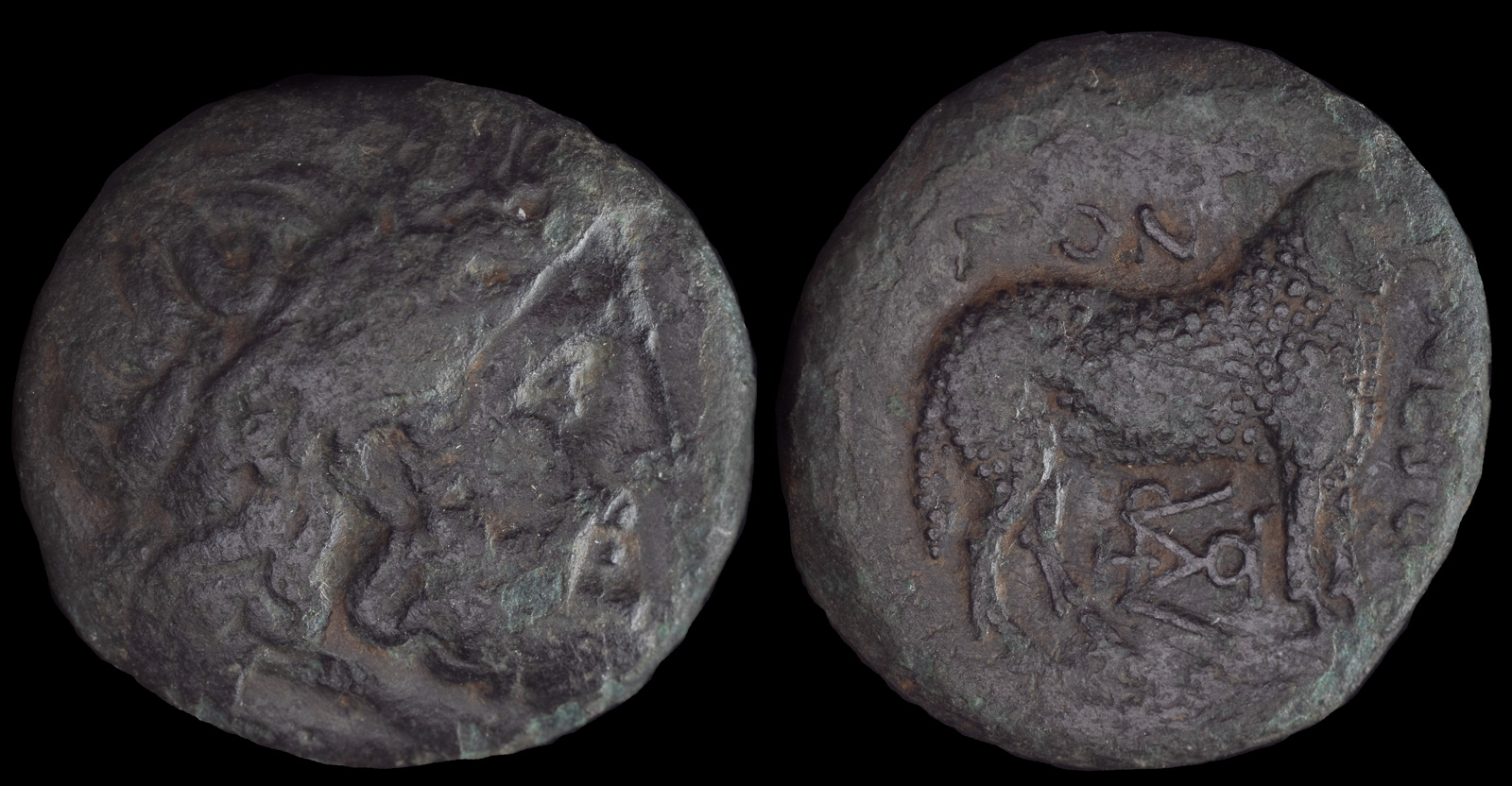
Thessaly, Gonnos
circa 350 BCE
Æ Trichalkon 18mm, 6,07g
Laureate head of Zeus right /
ΓON-NEΩN, ram standing right; monogram below
Rogers 225; BCD Thessaly II 75; HGC 4, 163
Gonnos was a city in Thessaly supposedly named after Gonnios, who led twenty-two ships on the Greek side in the Iliad. After the war, his GPS had some issues and he wound up in Libya, where according to Tzetzes he really fell for the desert and snakes ambience, so he got a residency permit and wandered around for a while. He later founded a city named Kynips.
Gonnos, also known as Gonnoi, was located strategically at the narrowing of the Vale Tempe, which supposedly was created by Poseidon’s trident. If that’s true, I sure hope he’s more careful with that thing. To think that he was just swinging it around when one day it got loose and carved out an entire canyon is scary.
The path from Mount Olympos to Thessaly also goes through Gonnos, and it was here that Xerxes’ MapQuest print out (remember they didn’t have mapping on their cells back then) directed him and his merry marauders. Because its location was so important, it was utilized later by the Macedonian kings Philip V and Perseus, and by the Roman Appius Claudius.
Herodotus and Aristotle mentioned a Kineas, King of the Thessalians, who aided the Peisistratidae against the Spartans around 510 BCE.
According to Eusebios, the Macedonian king Antigonos II Gonatas received his name because he was born and grew up in Gonnos.
The ruins of the ancient city are believed to have been found near the modern city of Gonnoi. One wonders why it took archeologists so long to figure that out.
In terms of my coin, Zeus was relatively common on Thessaly coinage. The city during this time was heavily Macedonian, so certainly it may have come from their influence, or a particular story has since been lost. In excavations, a temple to Apollo was unearthed but I didn’t see a record of one to Zeus.
For the reverse, the ram was the symbol of Gonnos, for a reason that is no longer with us, and he appears on all their coins. Unfortunately mine got a bit bored and started to pace, when he failed to heed the warning sides, approached the edge of the coin, and had his head cut off.
A French researcher named Helly actually spent a great deal of time at Gonnos and wrote a two-volume treatise on the ancient city. Sadly, it didn’t make the NY Times list, but I’ve sent an inquiry to the publisher to order a copy.
The Aetolian League aids Rome in defeating Philip V in the Battle of Cynoscephalae. Philip pauses for a day at Gonnos for troops who had survived the battle. Several hundred soldiers from Gortyna participate on the Roman side.
Perseus of Macedon fortifies Gonnos and travels through Phalanna.